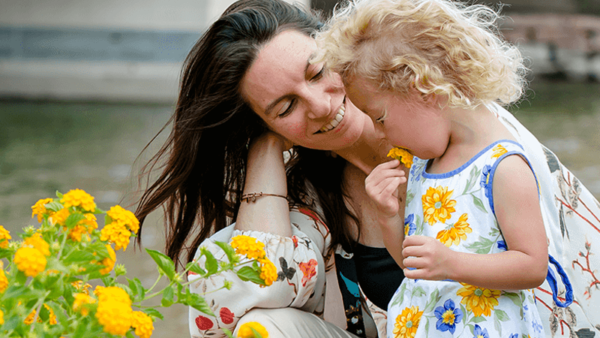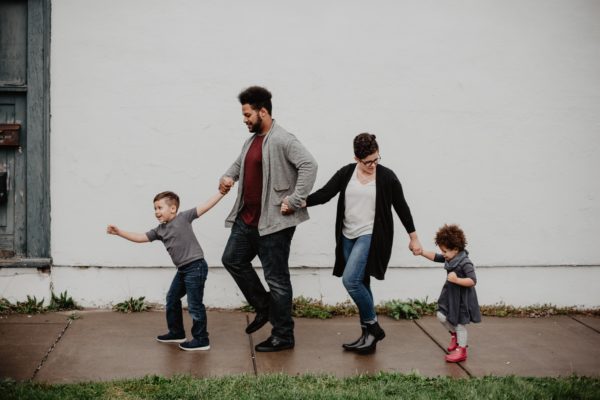This is a totally tricky topic…
…one I expect to get a lot of flack for. This topic is divisive in a way that other topics are not. We all agree on sexual abuse prevention! This one won’t be so easy.
It’s tough to know what limits to set, when it comes to your daughter’s clothes and makeup. Add in the shaming we received growing up, and this is a hot topic of discussion among my clients.
It boils down to this: is it possible to set protective limits without passing down shame? Without making women responsible for someone else’s transgression? I don’t think so.
Did you ever receive messages that you were Too Much?
Too sexy, too curvy, too provocative… What did that do to you? Did it create shame? Has it been limiting? Something you’ve wrestled with and had to heal from?
I’ve had that fear. As a teen, I worried about being too radiant, leading guys on. What if I laughed and flirted too much – would he think he was invited to make a move? What if I was too enthusiastic? Too sexy? What if I just wanted to dance, and someone else took it to mean more?
I don’t have that fear anymore. I completely place the responsibility on other people’s shoulders and not my own. I feel safe dressing any way I want, dancing any way I want, naked hot tubbing, and so on. Two things made the difference for me, between fear and safety:
- I’m sensitive to my gut feelings. If the circumstances feel less than safe and respectful, I’d rather leave.
- I’m confident of my boundaries skills. Not only can I stop an advance, I can confront small infractions, before they lead to big ones.
What changed wasn’t so much the kind of people I spent time with (though yes, we all got older and more mature) – it was me. What changed was how I show up in the world – fearful vs confident, worried vs decisive, wilting vs confronting. That’s what makes it safe.
Not the clothes I wear. Not the make up or lack of it. Not the way I dance.
Touching the wound
When our little girls copy sexy dance moves they’ve seen on TV, or ask to wear a bikini, crop top, short shorts, padded bra, makeup – we tend to freak out. We get concerned that they’ll receive a lot of sexual attention that they aren’t ready for.
But you wouldn’t go so far as to dress her in a burka*, right? You can count on her teachers and peers and most strangers to treat her appropriately, when she’s dressed “appropriately.”
Those standards are fluid. How we dress today would have been scandalous a hundred years ago. Cultural norms are ever changing. Our sense of what’s too audacious has a lot to do with our own upbringing and life experiences, and it might be out of date.
*Of course if you want to wear a burka, great! Do you. If she wants to wear one to be just like you, excellent! This isn’t about putting down anyone’s cultural dress. It’s about not making your daughter cover up and tone it down.
The objectification trap
Now, let’s acknowledge that as long as women’s bodies are objectified, there will always be girls who try the shortcut, thinking they can gain attention and admiration for their bodies. In fact, I’d guess that more than 50% of adolescent girls will experiment this way.
Taking some clothing choices off the table might be a temporary fix, but it doesn’t really address the problem. It doesn’t change how much importance she’s placing on her physical beauty. It doesn’t raise her self-esteem. Others will still detect that vulnerability and take advantage of it, if they’re so inclined.
Limits don’t help all that much. Yet, that’s our go-to strategy! Maybe there’s something else we could do that would be more effective?
Was your mother ever concerned that you dressed too sexy?
Mine was. Absolutely. There were certain dresses I could wear to a dance and others that I couldn’t buy.
Her intention wasn’t to turn down my radiance. It was to keep me safe from the fears and experiences that had shaped her life, and she was perfectly in her authority placing limits on me for my safety.
But, does choosing a looser dress really make a kid safer? Maybe it just keeps a parent from feeling uncomfortable. They won’t be triggered by their past, and they won’t have to deal with another parent’s judgement.
Winning the battle, but losing the war
Those are real hardships for a parent, and at the same time, the victim blaming and shaming are real hardships too.
The power struggle between parent and child distances the relationship. They really want the thing, and we’re out of touch for not allowing it.
“You’ll be asking for it” doesn’t present the parent as the child’s ally.
If the parent forbids the thing, and the child sneaks and wears the thing, and bad stuff happens, will the child feel safe telling the parent? Probably not. The thing is in the way.
Entertaining the idea
If we’re worried about safety, which is a parent’s responsibility, first we have to assess if our fear is out of proportion to reality. Would our child really be unsafe at school wearing the short shorts? At the dance in the crop top? On the street in the padded bra?
Or, might it be safe for them to run this experiment, to try dressing as they’d like and see what happens? Even if there is some danger, could it be safer to invest in emotionally supporting your child?
If we’re worried about lack of skills, let’s be transparent about that. You could say, “When you’ve got boundaries skills, then I’ll be ok with you wearing xyz thing. Until then, let’s work on the skill building.“ That puts you on your daughter’s side! She should be able to wear that awesome xyz thing. Let’s just make sure she’s ready in case someone responds badly.
Breaking the cycle
Mulling all that over, will I limit my daughter from wearing what she wants? I don’t think so. I think I’ll be focused on her connection to her gut sense, her skills with setting boundaries and navigating confrontations. If she’s confident and capable, she’ll be safe in 99% of circumstances, and the 1% is too random to do anything about.
I’m in a city and country and culture where I think it’s safe to do that. You might not be. I totally get that. You’re going to have to make that judgement call. But if you can safely refrain from making her responsible for other people’s bad behavior, it will go a long way toward building the future we want.
Because, if we had a perfect consent culture, would it be safe to wear anything you want? Absolutely.
Which means, at some point, we’ll be close enough to consent culture to stop slut shaming. To stop protecting our girls by controlling them. Are you ready to step into that?
If you said no…will you ever be? What would it take?
I’m ready to create those expectations. For me, stepping into that culture starts now.
You have many thoughts about this, I’m sure! Please comment below.
In support of you,
Anya
P.S. Have you registered yet for the 2018 Talking To Kids About Sex Interview Series? This year we’re focusing on Preventing the Next Generation’s #MeToo Stories. Come learn more about what we parents can do to bring about consent culture!










14 Comments. Leave new
I love what you said about limiting what a child wears based on their boundary setting skills, as opposed to shifting the focus on everyone else’s reaction. I don’t think that would have occurred to me and it’s such a helpful reframing!
This article arrived in my inbox at precisely the right moment! My 11 year old is tall and developed for her age. As progressive and informed as I claim to be, I definitely appreciated the reminder not to project my own history of shame onto her. Thank you!
“If we’re worried about lack of skills, let’s be transparent about that. You could say, “When you’ve got boundaries skills, then I’ll be ok with you wearing xyz thing. Until then, let’s work on the skill building.“ That puts you on your daughter’s side! She should be able to wear that awesome xyz thing. Let’s just make sure she’s ready in case someone responds badly.” A resounding YES to this!
I appreciate this very much. I have two comments. First, please revisit using the use of “put them in a Burka” as shorthand for “do something over-the-top controlling and oppressive.” That feels like it could be offensive to some. Second, for me now, with kids who are in early elementary, this issue is currently more about providing them with information. They are singing dance lyrics or copying dance moves and don’t have any idea that there is a sexual implication. I’ve found myself just explaining how the lyrics often have double meanings, and what the double meaning is, so they are not ignorant of what people might be thinking. But I’ve stopped short of saying “don’t sing that” or “don’t do that move”. I hope this is sparing them embarrassment (from not knowing what people are joking about or laughing about) and not seeding shame. But I appreciate the opportunity to think about this more, as more is definitely coming.
Thank you, Elif. I added the * to clarify. I love that you’re giving your kids a window into other people’s thinking. We will never be able to anticipate it all, but understanding the common associations is super helpful. What you’re doing is perfect! Kids need our help “translating” social dynamics, understanding the unspoken pieces. To some extent, kids sing and dance like that to try to understand it…and a sensual adult dance/lyric might not feel like much to a child. In which case, they can often be distracted with something more fun. If you’re daughter’s experimenting with twerking, she might actually enjoy the running man more, so share your favorite non-sexy dance move with her. Of course, if she’s enjoying the other dance move, or exploring people’s reactions to it, that’s where the conversation about the meaning becomes so important.
This ties into what I’ve been thinking a lot about which is, Claiming Our Yes! As in, Yes, I feel beautiful when I wear this, or I feel provocative, Or I Want to try and get attention, and see what that’s like….I remember walking down the street with a friend and we crossed paths with a group of teen girls who were dressed to the nines, with make up and heels, cleavage, cropped tops, heels. I made eye contact with them, and gave them all a smiling Hello. My male companion felt uncomfortable, he said he didn’t know where to look….. It started a great conversation about how to witness each other and our communities children/teens. My perspective is, all kids are our kids, and these kids want to be SEEN! So I saw them, I welcomed them and their presentation. I think they’d benefit from the healthy gaze of men/women who have no shaming or malintentions. Adults who can see them as teens and welcome them in that place, dressing up for themeselves, each other, their peers. ….anyway, this is what your post reminded me of. How can we claim our yes, and that of our children, while skill building. Such a rich topic….
Important topic. Thank you, Anya, for the invitation to discussion. We do communicate non-verbally by what we choose to wear. Our girls have a right to experiment, they need time and safe space to learn this communication skill. I’ve been very careful in how I’ve navigated issues related to body image with my daughter. However, until our society is 100% safe and humans evolve not to be sexually attracted by looks I’m teaching my girl just the opposite – not to place responsibility fully on other people’s shoulders. And my 20 year old daughter agrees.
Marina, thanks for articulating this. I commented on another post–the one about the Irish hashtag about consent, somewhat in this vein. I think it is important to point out that we do “communicate non-verbally.” Maybe even more goes on in our non-verbal communications than our verbal ones. I personally am not sure about a world that is 100% safe, or in which humans don’t feel sexually attracted by looks. I also feel that it is important “not to place responsibility FULLY on other people’s shoulders.” If we do, we completely give away our power, as though we have no effect on our world, no capacity to make boundaries and hold a line ourselves. Is it possible to turn the idea around? To actually begin saying that we DO have power? It doesn’t make others less responsible for their actions, but rather, as Anya said, it prepares us for when other people behave badly? I appreciate everything everyone is saying in this thread–and what Anya has articulated! How rich are the possibilities for stepping into a new culture when we can communicate differing views and refine our understanding again and again.
I really appreciate you taking this on. These push-pull conversations are happening all the time lately in my house. However, what I can’t ignore is that the fashion that the girls want to wear to show their independence and power is actually created based on male norms and male preference for restrictive/provocative/objectifying clothing. The whole concept of what “looks good” cannot be separated from what men want to see women wearing. It’s hard to see any of this as a freely made “choice.”
I so much agree with this. It taps into my ambivalence (as a 56-year-old woman!) about Beyoncé being powerful and sexy in her own right – yet being sexy by adhering to what I perceive as male-determined standards of sexiness and by seeming (to me) to want to be provocative for the male gaze
Great piece, Anya. I found myself dancing around slut-shaming innuendos when talking with my 13-year-old daughter who’s been requesting another hole pierced in her ear (she got them pierced at around age 10) – and she seems to like the idea of having multiple ear piercings. I was trying to convey the negative connotations it has for me when I see a young teenage girl with more than the standard set of one-earring-per-ear. I do admit that this is also tinged with my feeling that it reflects badly on the judgement calls of that girl’s parents (but hey – I’m likely to become one very soon!). I found myself using all kinds of euphemisms: I feel the girl looks cheap or “tarty” (we live in London) or as if she’s showing bad judgement or a lack of self-respect… In all honesty, I love the look of a second ear piercing in one ear, which I did tell her. I also want her to have agency and assert preferences. It’s hard coming up against the limitations of my own prejudices about what I’m conveying to her and why I feel these ways. Never underestimate cultural conditioning…
I agree that the fashions available today are very limited (IE read CROP TOP) and are probably the . Can you be more explicit about how to set boundaries for clothing choices? (vs what other’s think of your clothing choices)
Hi RL, well, in this article, I’m advocating for NOT having a dress code in your family, simply supporting your child in having the skills you anticipate they’ll need to be able to wear and do whatever they want. Most families DO have a dress code of sorts: no revealing clothes for the girls, and the boys do as they please. On the one hand, I think it’s great to model for adolescents how one can stand one’s ground in the face of intense pressure. On the other hand, I think there are plenty of opportunities to do this, and it doesn’t have to be around what your daughter wears. Modeling how to set a boundary and maintain it is key – they need to see us do it before they can do it, and it’s an essential skill. All that said, is your question about how the adolescent should set boundaries with themselves or the parent about their own clothing choices? Or around other’s reactions to their clothing choices? Or the how the parent should set boundaries with their child? Or with others who are reacting to their child?
I love that we’re finally teaching empowerment with skills building around boundaries. For years we’ve been talking about empowering our young women and then shaming them when they fail a number of ways due to not having strong boundary skills. This is a unifying method of keeping women safe. I’m 57 years old and just now learning how set and maintain boundaries. I know I’m not alone. This is an area where Mothers and Daughters can learn together. Instead of being divided by the topic of sex. I am so hopeful for our youth!